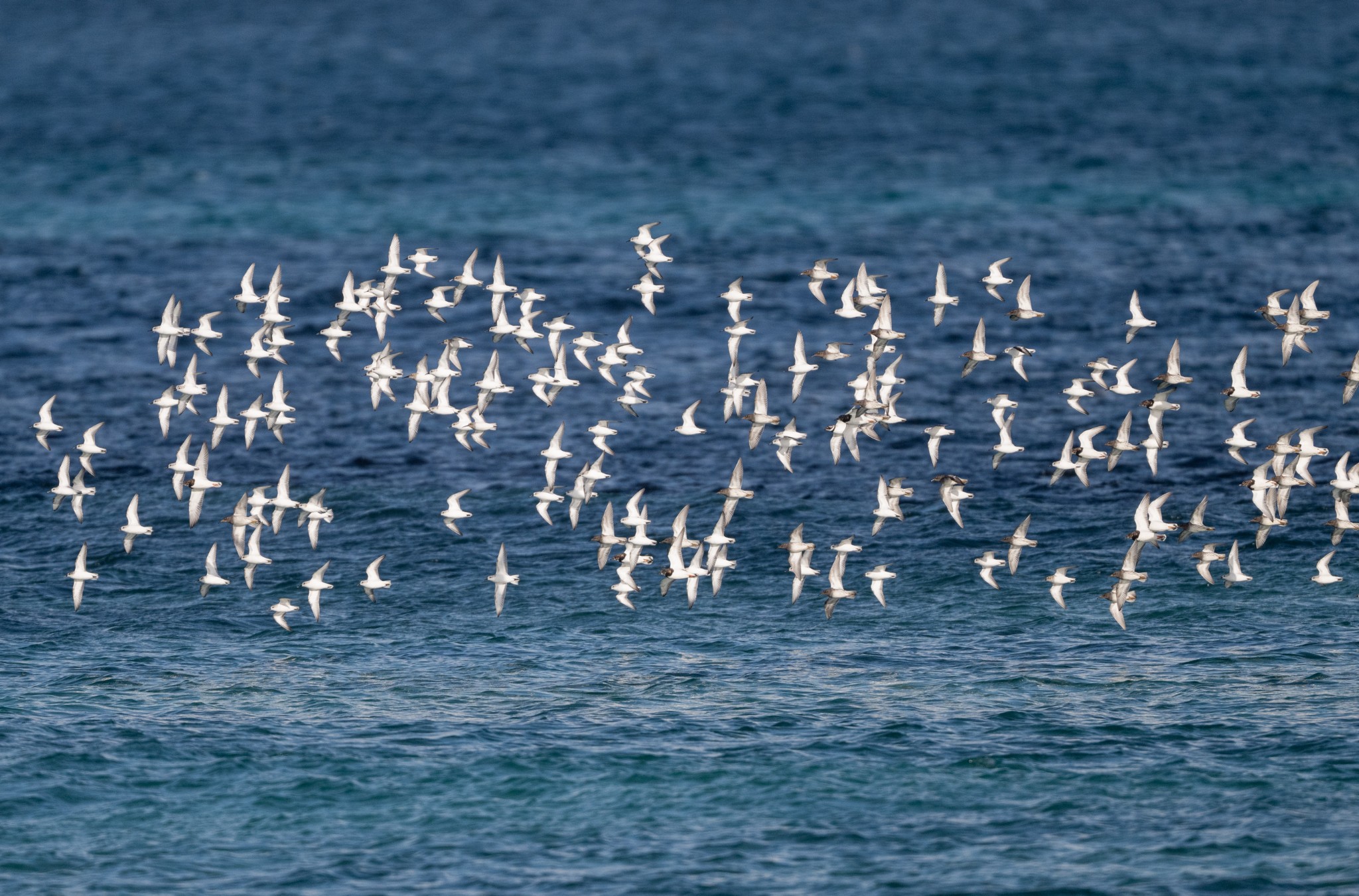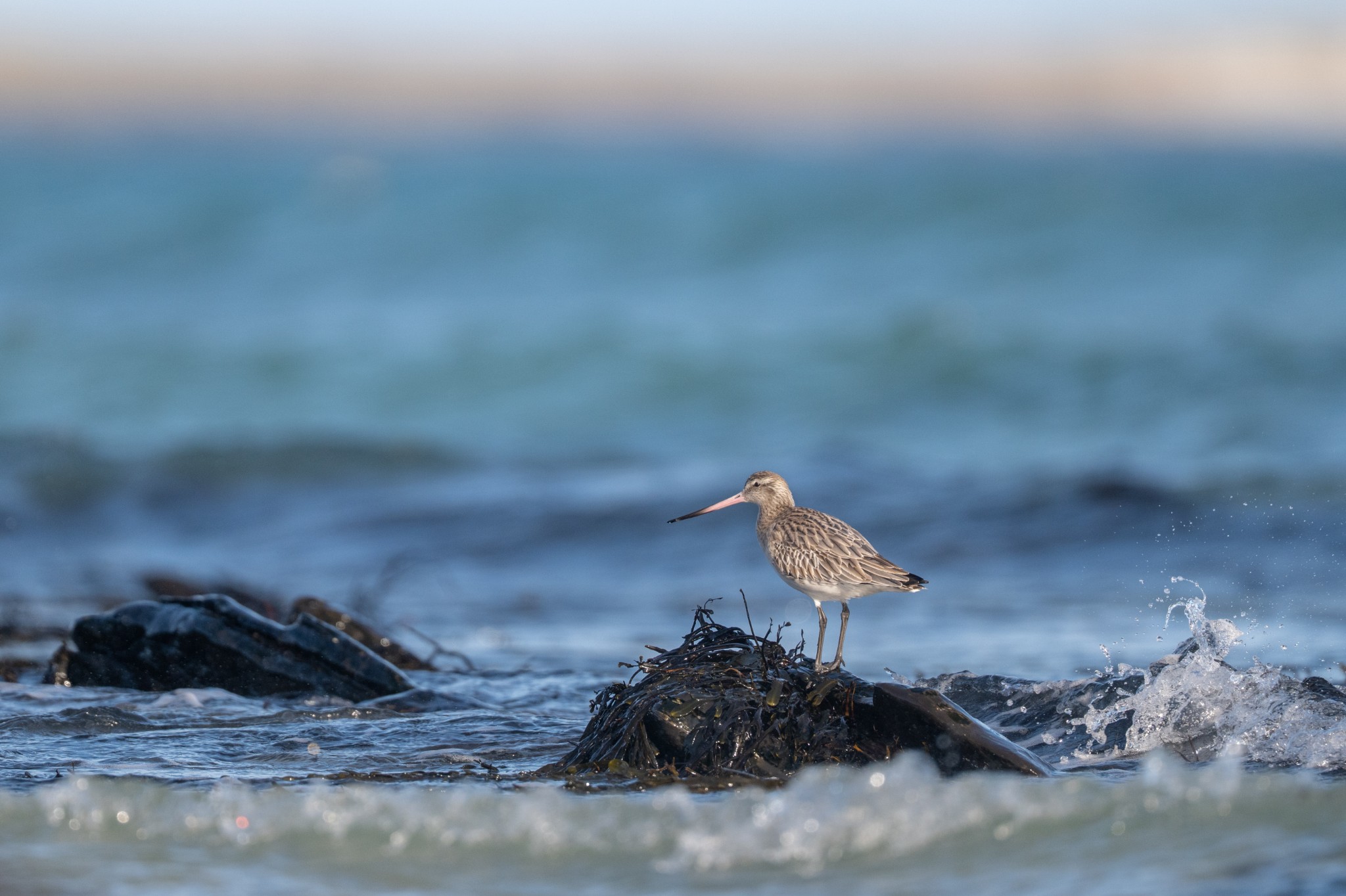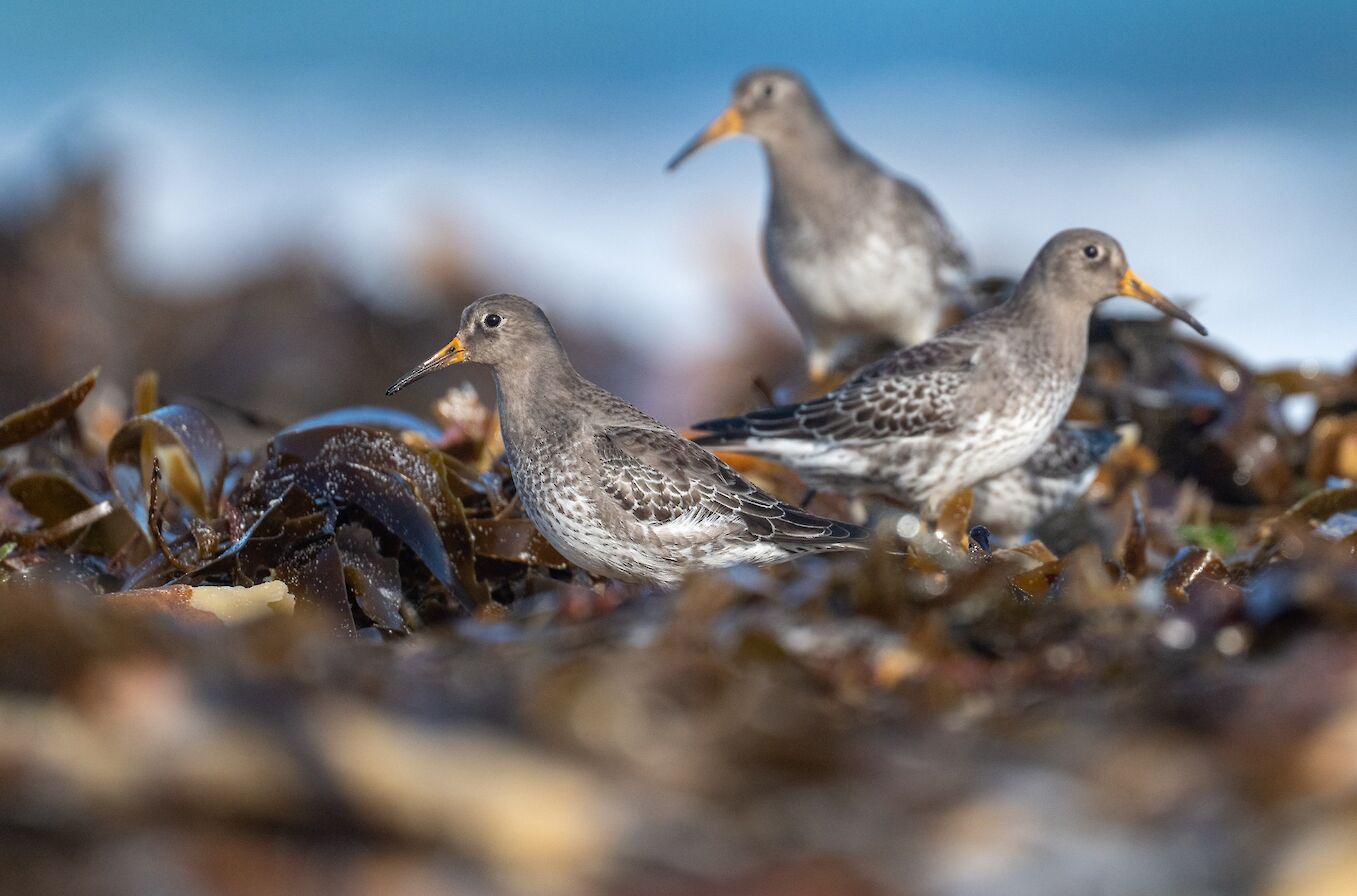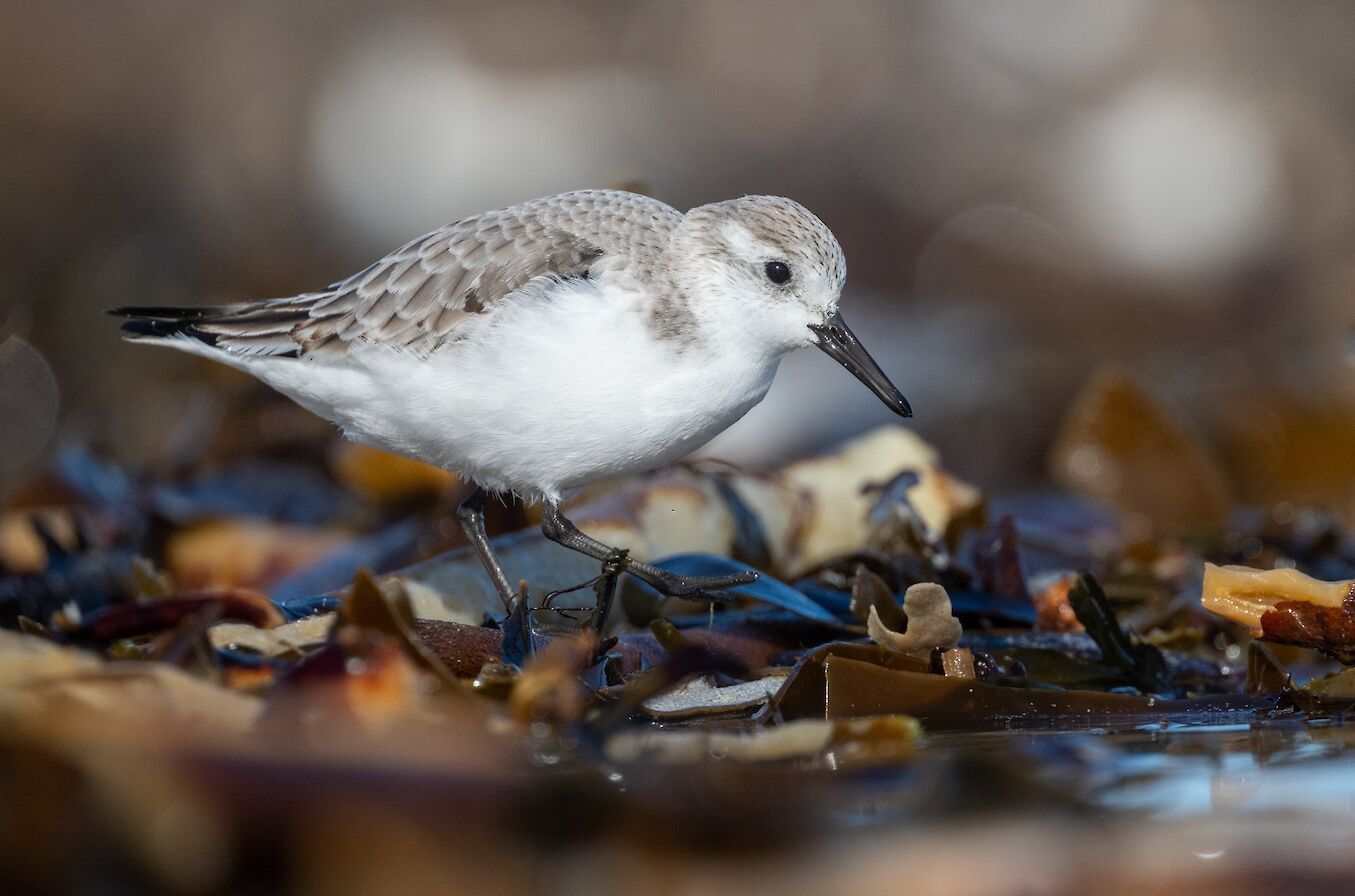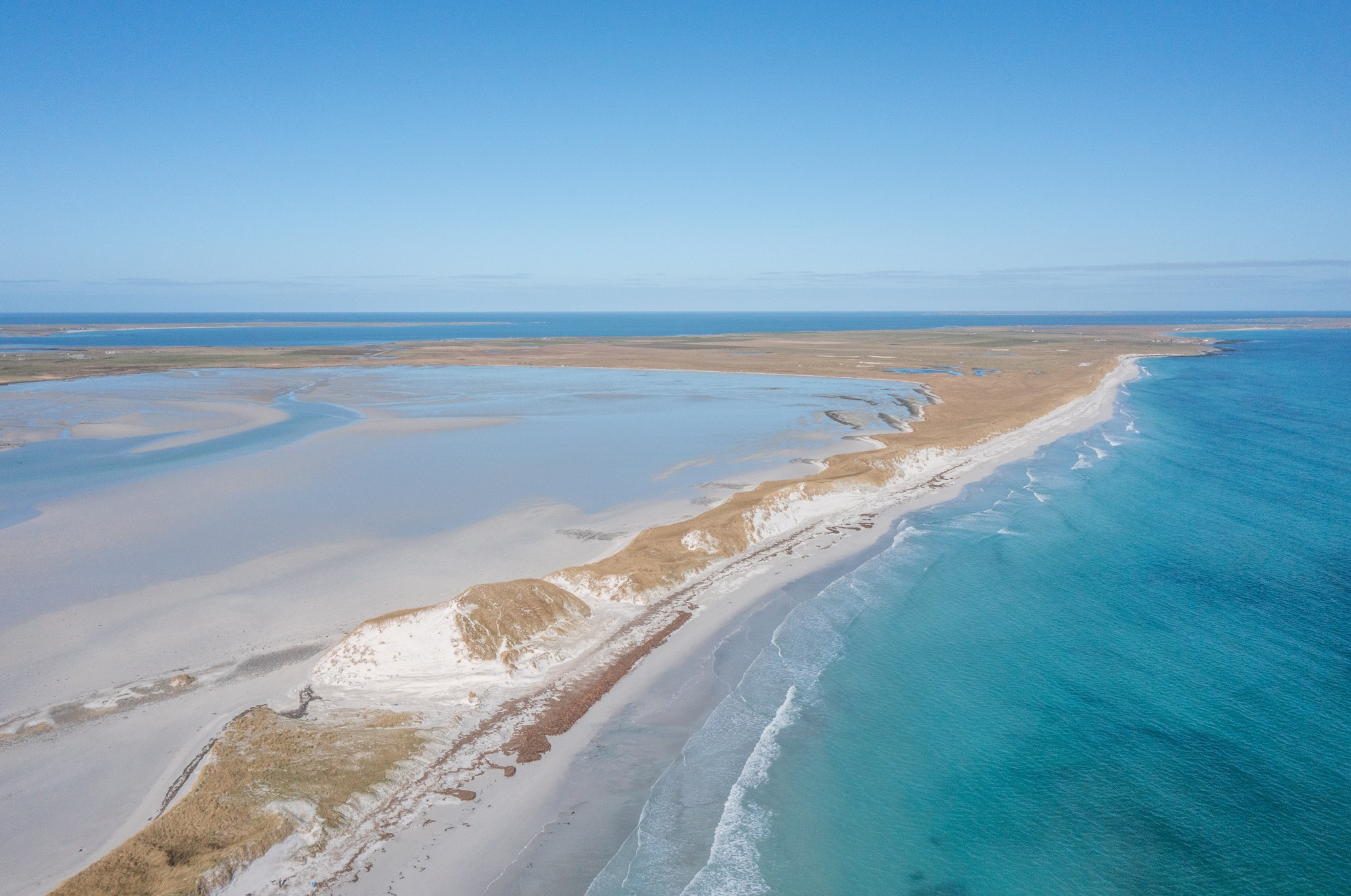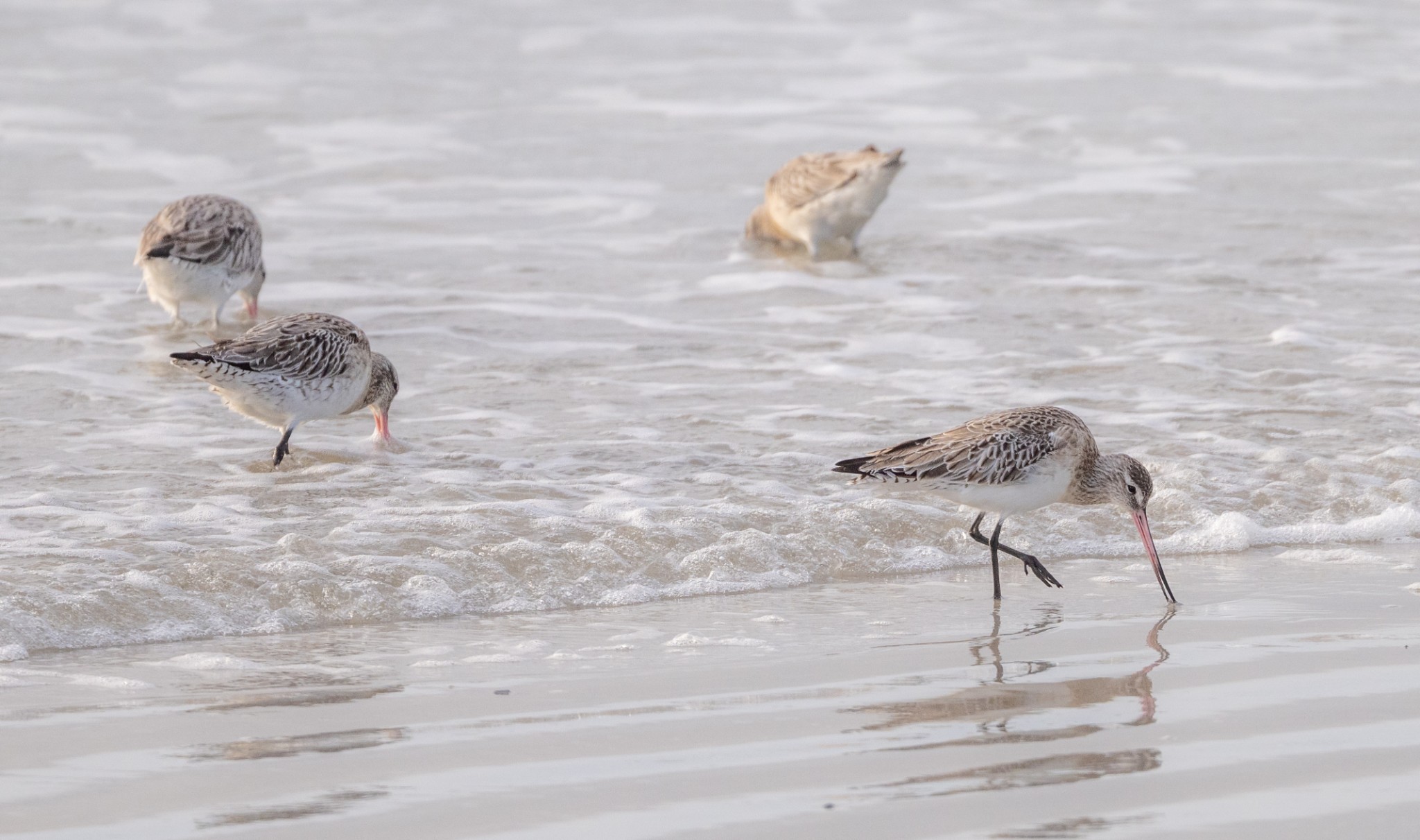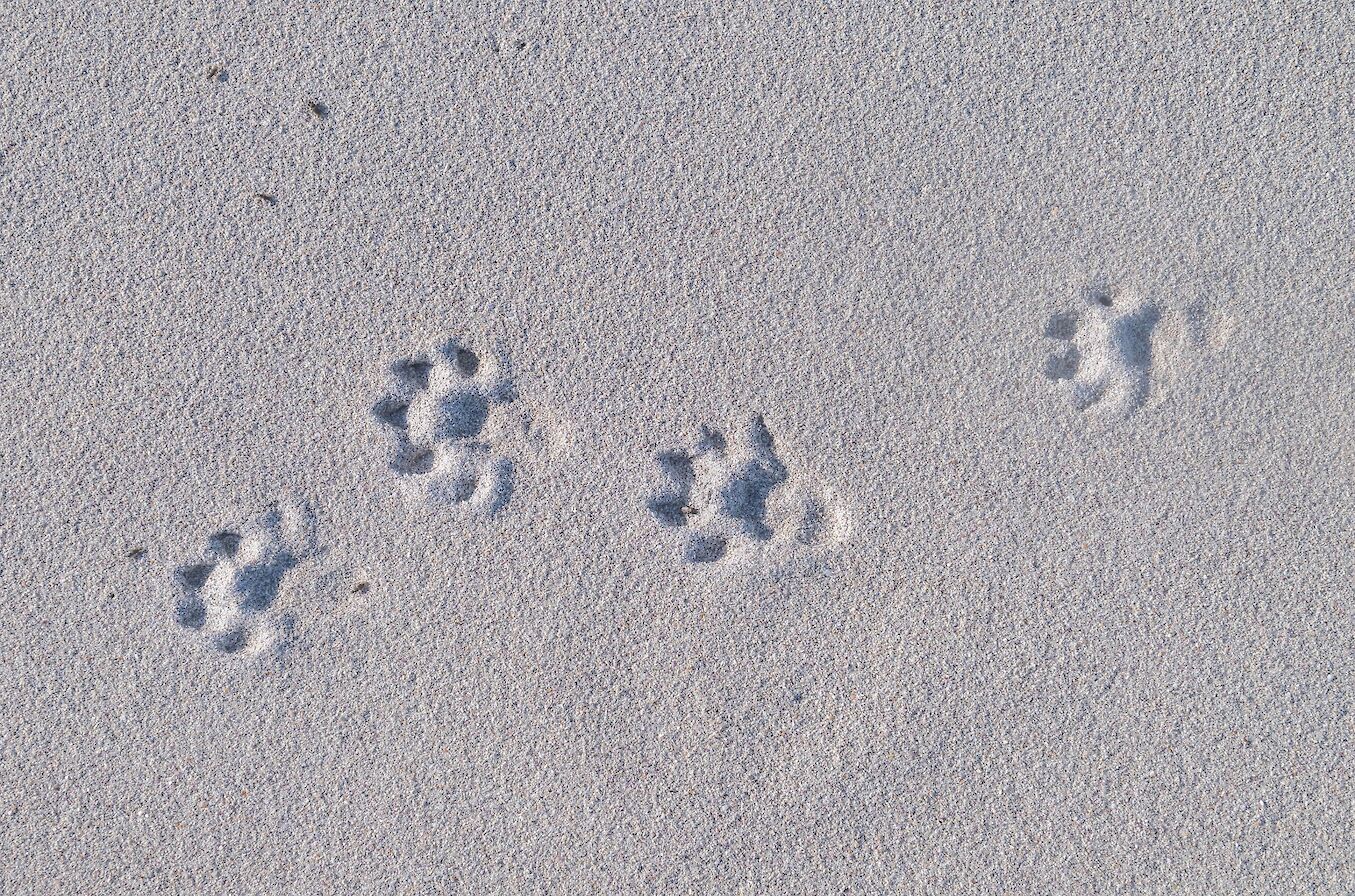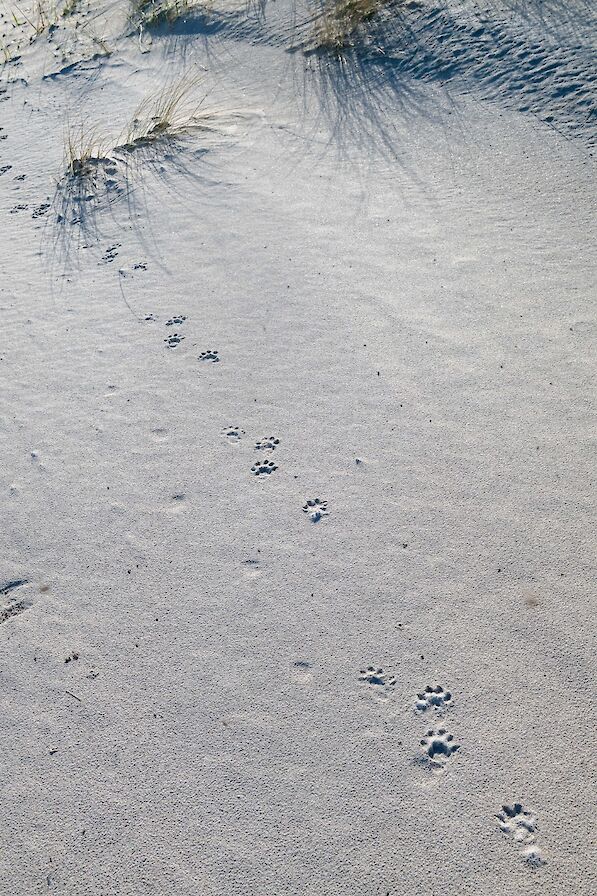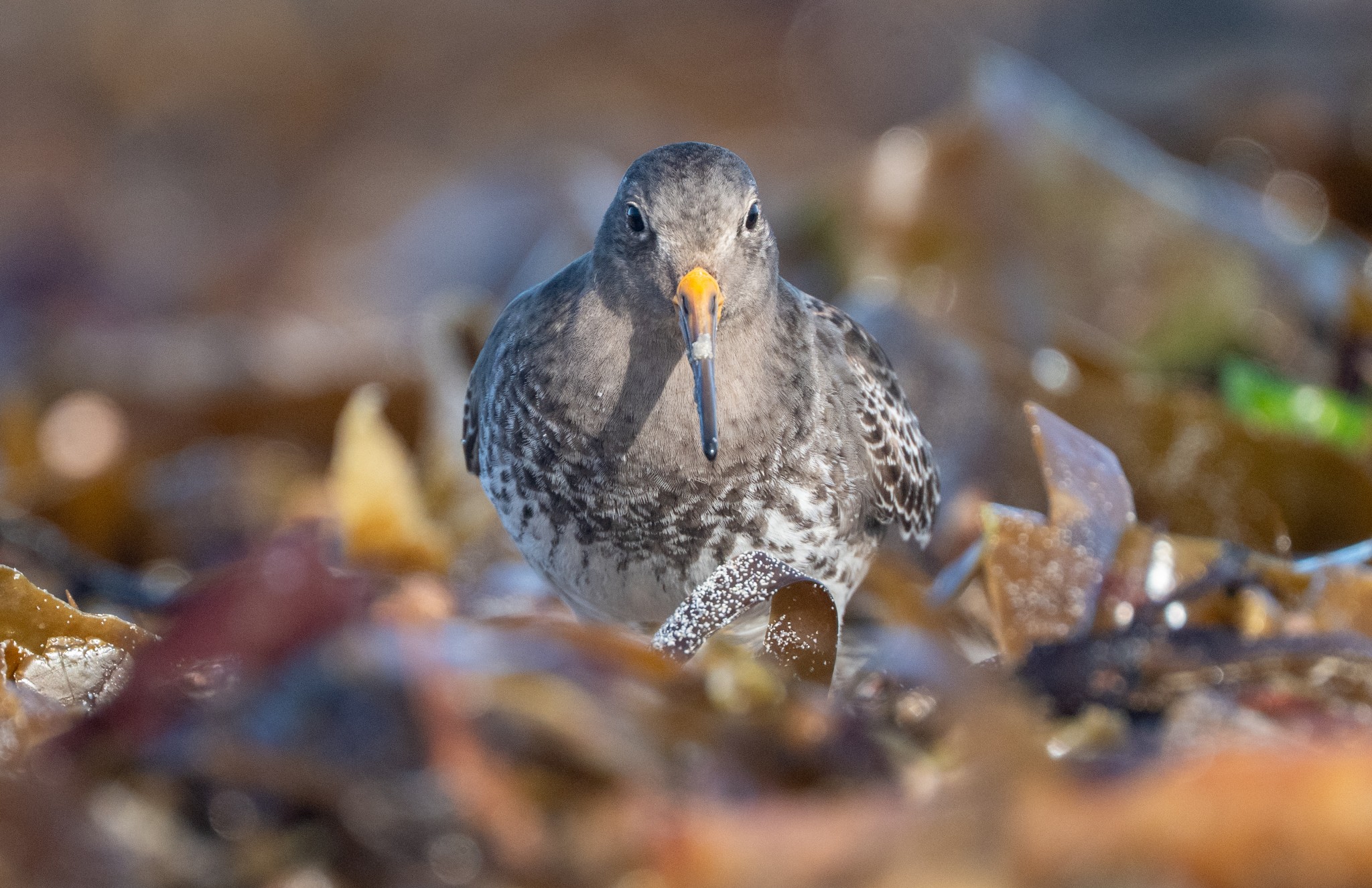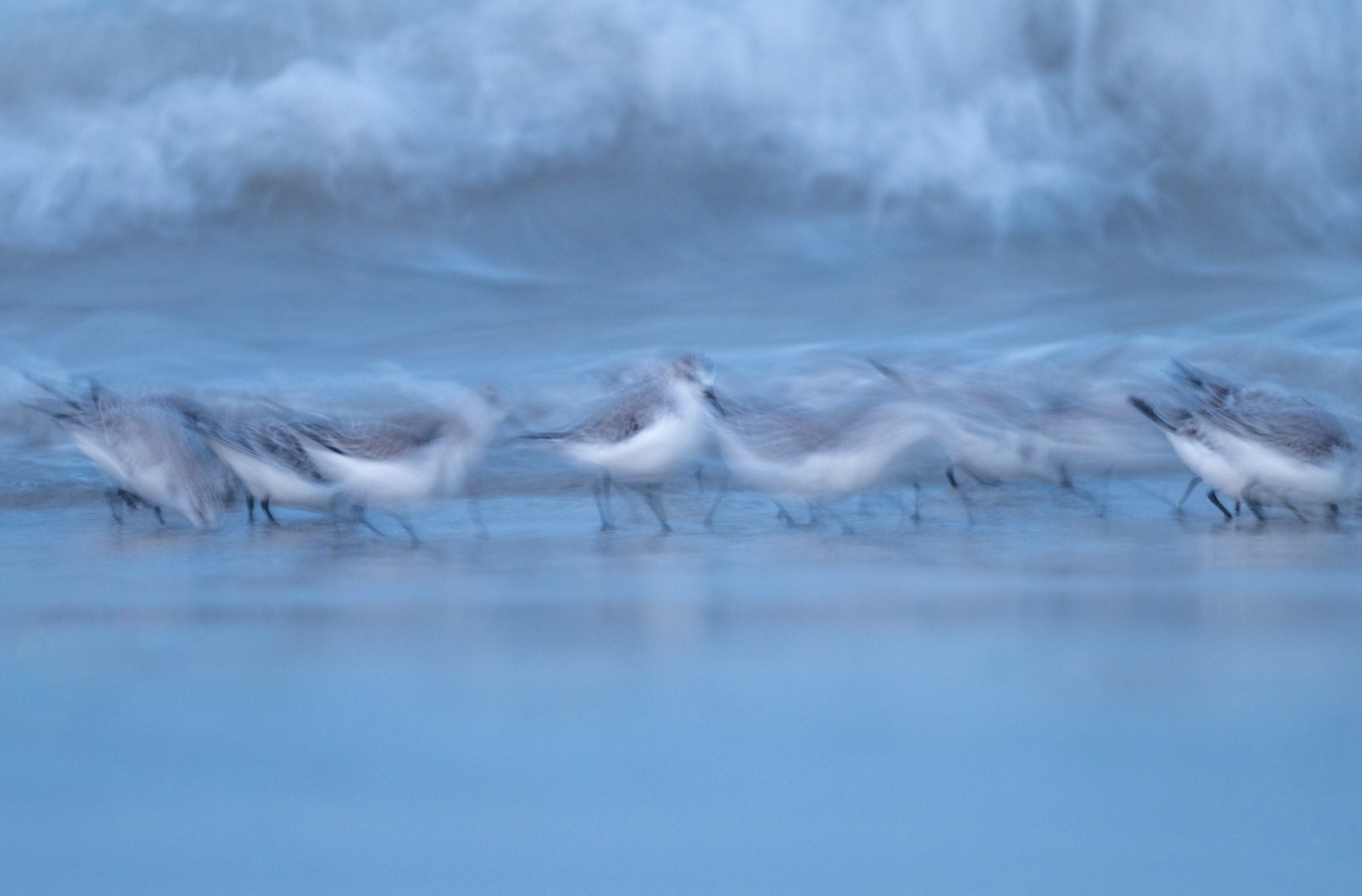This month’s article might read as something of a love letter to Sanday and I make no excuses for that, I love the island of Sanday. My heart is in Hoy but of all the north isles, Sanday is the one I come back to again and again.
As the name suggests, Sanday is full of long stretches of beautiful white sandy beaches, towering sand dunes, and impossibly turquoise water in the shallow bays. Beyond these beaches and machair fringes, the low-lying landscape is dominated by farmland.
I’m not the only one admiring the beaches in Orkney’s largest north isle. Wintering wading birds take advantage of the rich pickings on offer here. Not only is it possible to get excellent views of them but there are also opportunities to get great photographs of them too.
So good is Sanday for wintering wading birds that Sanday has been recognised as not only being nationally important, but internationally important for these wonderful birds. As such it has three conservation designations, an SSSI (Site of Special Scientific Interest), an SPA (Special Protection Area) and a Ramsar site which isn’t an acronym but rather a classification under the Convention on Wetlands of International Importance.
Put simply, Sanday is one of the best places in the world for wintering wading birds. But despite just having given Sanday a massive gold star it wasn’t without trepidation that I went there recently.
I was co-leading a wildlife photography workshop with Norwegian wildlife photographer, Espen Helland. Taking photos of birds by yourself is one thing, being able to put other people into position to be able to photograph them is another. It’s not like photographing the Ring of Brodgar - at least you know it will definitely be there! As it was my first time running such a workshop, I was a little nervous but keen to share what Sanday and its wildlife had to offer.
But before we get to the challenges it’s worth thinking about why Sanday is so good for waders and why they congregate here. In very simple terms, it’s food. The beaches provide enough food of different kinds to the various species that allow them to be here in such good numbers.
The species in question are bar-tailed godwit, ringed plover, purple sandpiper, sanderling and turnstones, all with different shaped beaks that allow them to have a niche or slight advantage over the other in utilising the food on offer. The smaller waders are however very often found together and will fly in mixed flocks from one feeding site to the next.
Although the island mostly gained its designations because of the afore mentioned species there are of course other wading birds here too. I saw oystercatcher, redshank, curlew, knot and a much scarcer wader, the grey plover. It has a simple beauty and you are likely to only ever see one or maybe two together and always on the shore, unlike the golden plover which is found in abundance in fields during the autumn and winter.
Whether the birds can feed on the molluscs, crustaceans and worms on offer is subject mostly to the state of the tide and this provided the first challenge, trying to find a suitable tide window to allow us to photograph the birds. It pays to be focused and targeted too. I wouldn’t, for example, come to Sanday with the aim of photographing redshank. On open shores they are alert and difficult to approach and at times can be a bit of a pain. There’s nothing like a redshank alarm call to spook other birds, often resulting in them taking off despite there being little in the way of danger.
To the tide. Whitemill beach has been my ‘go to’ beach for many years but on arrival the high spring tide was quite literally eating away at the soft bank, with chunks of sandy soil held together by grass roots slipping into the sea with each crashing wave. When the sea is this high the waders retreat to rest in nearby fields and can be hard to find.
There is an encouraging find here though. It’s a warm day and so there has been a large hatch of kelp flies - flocks of starlings are diligently picking them from between the flat stones. Waders love to eat the maggots of these flies and this story is one that I find endlessly fascinating, how energy is transferred from the sea to the land and on to the birds themselves, not only sustaining them for the winter but also building up fat reserves before their spring migration north to Arctic breeding grounds.
Sanday is surrounded by a massive underwater kelp forest, itself garnering even more conservation designations. During winter storms large volumes of kelp including their long sturdy stipes are washed ashore, the rotting mass the ideal warm place for kelp flies to lay their eggs.
I return the next day at low tide and there is certainly kelp strewn all over the beach but this turns out to be a disadvantage for photography. The kelp isn’t in long stretches but rather in smaller clumps up and down the shore. Where would you position yourself in this circumstance? You could choose one clump in the hope some turnstones might land on it but really the birds have too many choices here which in turn limits our chances.
Sanday has no shortage of beaches however and so on to the east coast.
I have never seen so many bar-tailed godwits in my life. The tide is out and so the wide-open expanse of Cata Sand is available as an all-you-can-eat lugworm buffet.
There must be over 300 of these elegant waders here. A large wading bird yet smaller than a curlew, it has a muted winter plumage that it would be easy to be unkind about.
It does however have a bill to boast about. It is a wonderfully soft coral pink colour for the most part and being long allows it to probe deep into soft sediment in search of lugworms. The bills of female wading birds generally described as being ‘long-billed’ are larger and longer than their male counterparts, this probably easiest to see in curlews. It is such a joy to watch them and at times they are probing so deep their heads are under the sand.
We tend to think their bills are rigid but not so. Several times I witness the end of the top of the bill tip upwards as if slightly hinged. Its pliability an advantage when trying to locate prey. The bar-tailed godwit also takes the idea of being a wading bird to the extreme, often walking through water way deeper than its long legs giving the impression it is floating rather than walking.
One of the best ways to photograph small waders is to choose a spot, lie on your stomach and wait for them to come to you. This can be a bit of test of nerves, especially when you can see flocks of sanderling happily feeding at the opposite end of the beach running up and down the sandy expanse as the waves come in.
Before I get settled, I have a quick look at the sand dunes and find probably the best set of otter prints I’ve ever seen. The damp cold sand has perfectly preserved the imprint of the five toes and pad of what I think must be a mother and cub.
Although often very trusting you will have much better results if you can hold your nerve rather than trying to walk up to the birds. The sun is bright but not too harsh and so our group chose a spot halfway down the shore next to a line of rotting kelp and put down a mat to lie on. Granted, this can be a bit uncomfortable on your neck if you stay in the same position for a while but it’s worth it to get a more intimate image by being at eye level with the birds.
Our patience is rewarded. A large flock of small waders has taken off from the far end of the beach and is heading our way. These fights are rarely straight from A to B and I can tell as the flock switches back and forth over the sea that it is mostly composed of sanderlings as it flashes bright silver as the birds twist and turn.
The mixed flock of sanderling, turnstone, purple sandpiper and a few dunlin lands right on our patch of seaweed and starts making its way towards us. It’s a fantastic opportunity not only to get some beautiful close-up images but also to see how each species works slightly differently to utilise the same food source.
The turnstones are somewhat less elegant than the others, pushing headfirst into the colourful weed. These birds feed mostly by sight rather than touch and so it flips over the weed, jabbing as it goes. Although there is plenty of food here it doesn’t mean it isn’t competitive, particularly between the turnstones, which occasionally argue amongst themselves with gaping beaks.
The sanderling look bright white, clean and crisp against the dark weed, a highlight in their dark eye. The purple sandpiper look great too, the sun really bringing out the orange at the base of their bills. When they are feeding in the kelp this way you will see all three of these species take advantage of the same thing. They know somehow that the worn ends of kelp stripes will contain a morsel of some kind, a tiny crustacean or a maggot of the kelp fly and so all will probe into the end to extract whatever is inside.
Because of the three-dimensional nature of the seaweed it feels at times like I’m actually too low, the seaweed obscuring the birds. The purple sandpipers are the boldest and I can barely keep the smile off my face, they are happily feeding a mere eight-feet away. This might be the best encounter I’ve ever had with the waders and so I’m a little relieved too as I turn around to see a group of happy clients!
The best is yet to come however, and as the light fades and the tide comes in again, the sanderling change their feeding technique and ramp up their activity, busily probing the sand in a tightly knit group. They have found what is likely a band of tiny worms and they return to the same spot, working tirelessly no doubt knowing they have to make the most of the bounty whilst the tide allows.
This allows me to change photographic technique too. I had started increasing my ISO to such an extent that I reached ISO 10,000, allowing me to keep a reasonable shutter speed. But this is the perfect opportunity to experiment and so I go in the opposite direction. I’m at ISO 640 and with a shutter speed of 1/6th of a second. The birds are rendered as movements, as shadows of themselves, and it portrays perfectly the atmosphere of the scene, one of frenetic energy in the dying light.
These are the days you take a moment to absorb, one of those rare perfect days on Sanday’s perfect wader beaches.
Raymond is a wildlife filmmaker who also offers bespoke Orkney wildlife tours and one-to-one wildlife photography tuition. Find out more via his official website. You can also find him on Facebook, Twitter and Instagram.
